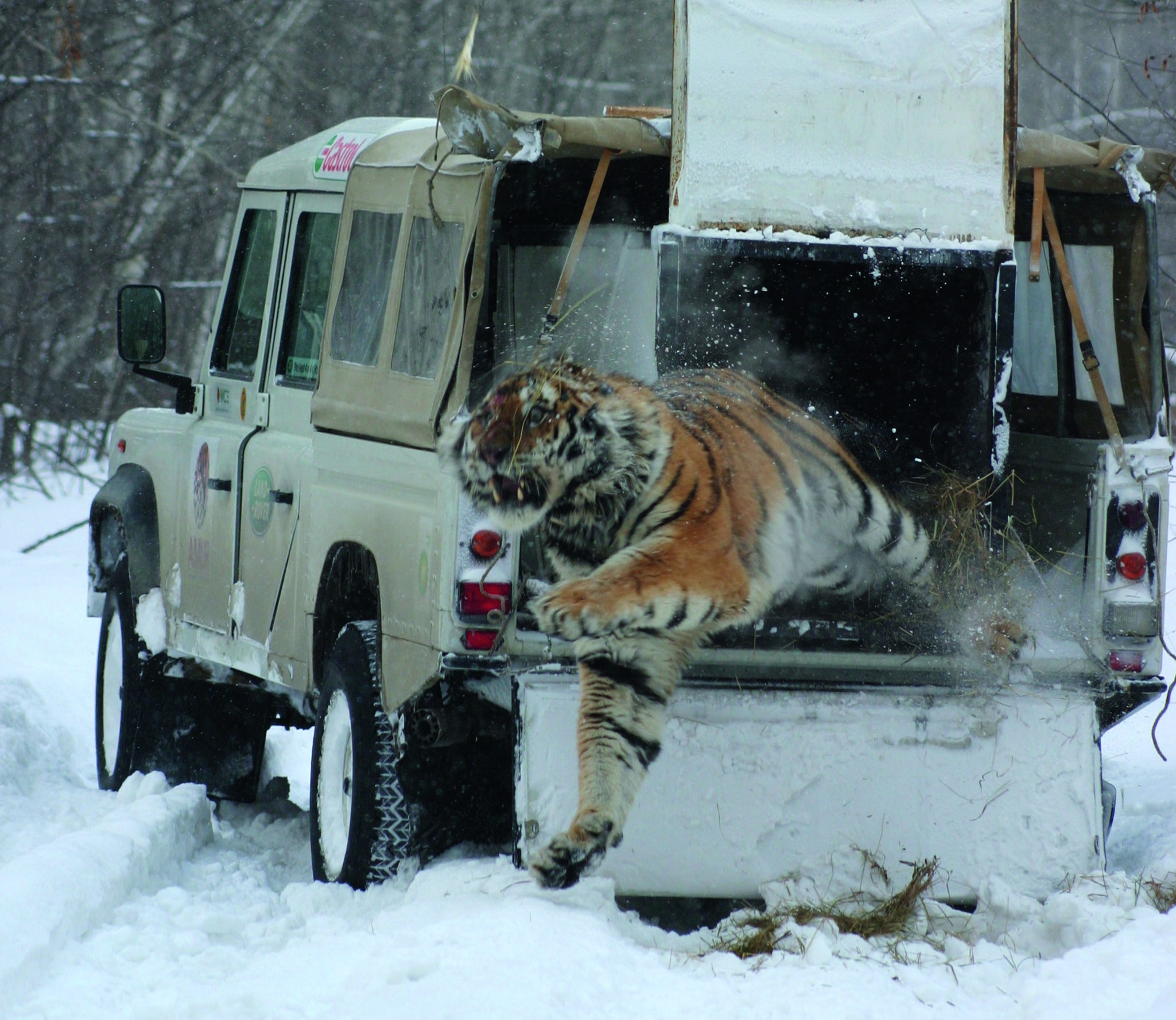The American conservationist Jonathan C Slaght has written about Russia’s far east before. Owls of the Eastern Ice had the same eccentric charm as its subject, the rare Blakiston’s fish owl. It turned remote, demanding scientific fieldwork into something almost magical.
Tigers Between Empires tries to pull off the same trick. It is set in the same region, but this time the focus is on the Amur tiger — popularly known as the Siberian. It follows the work of the American-led Siberian Tiger Project in the 1990s and 2000s, which trapped, collared and tracked tigers to find out what it would take to help them to survive.
Slaght focuses on the work of the legendary researcher Dale Miquelle, who for a time was his boss. He draws heavily on Miquelle’s letters and field notes, and it almost feels like a first-person account. You sense the silences and threats of the deep forest. You taste the pungently Siberian flavour of the desperately remote towns — all woodsmoke, pine resin, steam from the banya bathhouses and fuel from battered Soviet-era vehicles.

Slaght is keen on the local cars, from the “squat” Lada Niva to the UAZ-469 off-road vehicle nicknamed “little goat”. His human character portraits are rather wonderful too. One researcher has grey that “crept slowly into his beard like fingers of a glacier”. Another, a leading Russian scientist, is described as “like a heavy-smoking, hard-drinking Bilbo Baggins; the tiger was his Ring”.
But it is the characterisation of the forest, and the tigers, that counts here. You definitely feel the vastness of the challenge. The Siberian forest covers an area about the size of the US, and even the research team rarely sees a tiger. One, Olga, was spotted only five times in the 13 years she was tracked using a radio collar. That is a total of 14 minutes of eyeball observation.
When tigers are eventually met at close-hand, Slaght very much leans into their carnivorousness. He describes “a shock of orange and black among the whiteness, a beast wild with fury”, “a furry behemoth quivering with wrath”.
Encounters are soaked in adrenaline. When a Russian poacher stumbles on a tiger in a forest clearing, it roars at him in “a wall of furious noise, as though an airplane door had burst open mid-flight and all the air in the forest was being violently sucked out”. He shoots it, but it doesn’t stop the tiger slamming into him “with the force of a school bus”, pinning him down and mauling his arms, legs and head.
• Every Last Fish by Rose George review — the abuses of the fishing industry
When the Americans try to trap tigers, it does not always go well. An early plan is to attract them to a giant trap using dogs as bait. The tigers stay well away. More successful is setting snares around kills and “scent trees” — where tigers spray urine to mark their territory, leaving a visible dark patch.
The problem is that the researchers still have to walk right up to the tiger, trusting that the snare is securely attached to a nearby tree, and tranquillise it at close range. The dart guns often go wrong. It would be comical — Slaght describes the noise of a misfire as a “soft poot” — if it were not terrifying. On one occasion, the project accidentally snares three tigers at once, and they have to run between them, desperately taking blood samples and attaching radio collars while the drugs — visibly — wear off.
A later experiment is to use darts shot from helicopters. One far-from-sluggish tiger shoots up a tree to attack back, “a knot of muscle and rage only 30 metres away seeking to swat this giant moth out of the sky”. On another misadventure, the scientists themselves are driven up a tree — this time by a furious bear that they snared by accident. “The animal’s eyes were full of malice, his breath rank, his fur matted” — and he almost gets one researcher by the foot, before being shot at the closest possible range.

A tiger is released back into the forest after a health check
JOHN GOODRICH
The downside of all this immersion is that at too many moments I rather wanted to leave. Slaght has a somewhat relentless appetite for local detail, and the region sounds like an acquired taste. In winter it is “deeply and dangerously cold”. In spring, “dense with humidity and pulsing with biting insects”. In summer, cold fog gives way to swarms of insects then punishing typhoons.
Among the animals, the tigers sound relatively appealing. One passage of bravura ghastliness describes entering a remote cabin and thereby releasing a “roiling cloud of pestilence” — a plume of mouse-dropping dust riddled with hantavirus, which kills 15 per cent of people who contract it. The cabin has to be meticulously swept with a wet broom, and that is before dealing with the rat snakes living behind the walls, under the floorboards and in the ceiling. The forest, meanwhile, is so thick with encephalitis-laden ticks that Miquelle wears a special “entsefalitika” costume — an all-over anorak suit with tightly cinched cuffs.
• The best books of 2025 so far — our critics’ picks
Still, Slaght is convinced it was all worth it. The American project generated a tsunami of research papers, and helped to inspire the creation of national parks in Russia and just across the border in northern China. Vladimir Putin’s self-mythologising espousal of the Amur tiger’s cause may also have helped. So may the efforts of Russian scientists, although they appear here almost in walk-on cameo roles — which is perhaps inevitable, given the book’s focus on Miquelle’s experiences.
Whoever gets the credit, credit is certainly due. From a population low of maybe 20 individuals in the 1940s, Amur tiger numbers have grown to almost 500. And this is at a time when tiger numbers elsewhere have plummeted. In the 2000s tigers disappeared altogether from Vietnam, Cambodia and Laos. Even if the gains feel fragile — Slaght is insistent on this point — and even if the efforts feel
slightly exhausting, this book does offer that rarest and happiest of things in the world of nature conservation: a success story.
Tigers Between Empires by Jonathan C Slaght (Allen Lane £30 pp512). To order a copy go to timesbookshop.co.uk. Free UK standard P&P on orders over £25. Special discount available for Times+ members

